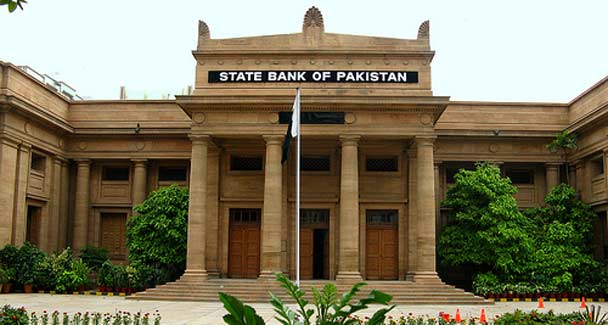KARACHI: The State Bank of Pakistan (SBP) on Friday decided to keep the policy rate unchanged at 5.75 per cent following the higher economic growth and lower inflation.
The SBP said in the policy statement that the macroeconomic environment remains conducive to growth without impacting headline inflation. Favorable initial estimates of major crops, a healthy growth in credit to private sector and growing productive imports all indicate solid gains in the real sector.
On the back of adequate food supplies and stable international commodity prices, headline inflation decelerated in the first two months of FY18. The pursuit of higher economic growth, however, poses growing challenges partly enunciated at the start of FY18. These include those arising from pressures on the external front and an expansionary fiscal policy.
It said expounding the real sector, full-year LSM data indicates a healthy and broad-based growth of 5.7 per cent for FY17 as compared to its earlier estimates of 4.9 per cent. In fact, LSM for July 2017 posted a growth of 13.0 per cent. Delving deeper into FY18, manufacturing activity is expected to benefit from higher development spending, growing investments in CPEC-related projects, improvement in security conditions, and the continued trend of stable and low cost of borrowing.
Furthermore, an upbeat industrial outlook and a promising assessment of major crops are going to have positive spillovers on the services sector. Based on current projections of agriculture sector growth, GDP growth is likely to reach the annual target of 6.0 per cent for FY18 leading to an improved capacity to accommodate rising domestic demand.
Turning to inflation, average CPI inflation eased to 3.2 per cent in Jul-Aug FY18 compared to 3.8 per cent during the same period last year. With comfortable wheat and sugar stocks, no major disruption is expected from supply side in the coming months of FY18. However, the core inflation (non-food-non-energy), reflecting the underlying demand pressures in the economy, continues to maintain its higher level of 5.6 per cent in the initial two months of the fiscal year. This is also visible from IBA-SBP’s consumer confidence survey of September 2017, which shows a modest rise in expected inflation during the next six months. Thus, with these demand and supply-side dynamics, average CPI inflation is expected to remain well below the FY18 target of 6.0 per cent.
As depicted by core inflation, changes in monetary aggregates also indicate growing demand in the economy. Although credit to private sector recorded a net seasonal retirement of Rs80.6 billion during 1st July to 15th September FY18, its year-on-year growth has edged up to 21.1 per cent on 15th September 2017- as compared to 7.7 per cent on 16th September 2016, reflecting an increase of Rs892 billion during the year. Led by historic low-interest rates on the one hand and growing construction activity and consumer durables on the other, demand for credit picked up. At the same time, healthy deposit growth has improved the supply of loanable funds with the banking sector and market rates remained stable. These favourable conditions at the beginning of upcoming credit cycle bode well for healthy credit offtake for yet another year.
The current account deficit for the first two months of FY18 has widened to US$ 2.6 billion. This is primarily driven by higher imports of productive goods, especially of machinery, metal and petroleum products. The increase in import of these three groups was strong enough to offset the combined impact of healthy growth in exports and workers’ remittances during Jul-Aug FY18. On the financial account front, foreign direct investment recorded a net inflow of US$ 456 million in Jul-Aug FY18, which is more than double the level of inflows in the corresponding period last year. This, together with other financial flows, was however not enough to manage the higher current account deficit.
Going forward, there are anticipations of gain in exports on account of favourable global economic conditions, improvement in domestic energy supplies, and incentives given to exporting industry. Compared with information in July 2017, exports present an encouraging picture. However, imports are also expected to rise due to ongoing CPEC related investments and domestic economic activities, although at a slower pace than in FY17. Amid declining number of workers proceeding abroad, there are prospects of sluggish growth in workers’ remittances. Hence, an improvement in the country’s external account and its foreign exchange reserve relies upon timely realization of official financial inflows along with thoughtful adoption of structural reforms to improve trade competitiveness in the medium term.




